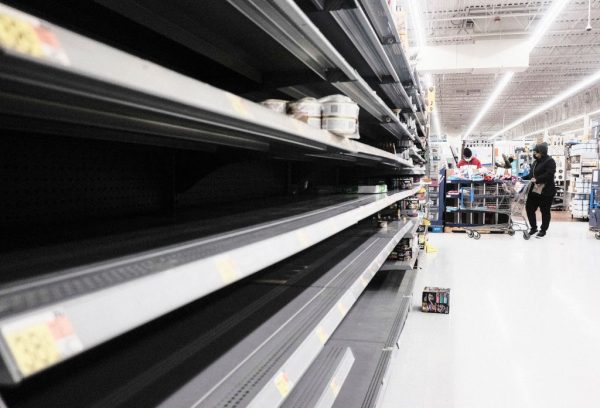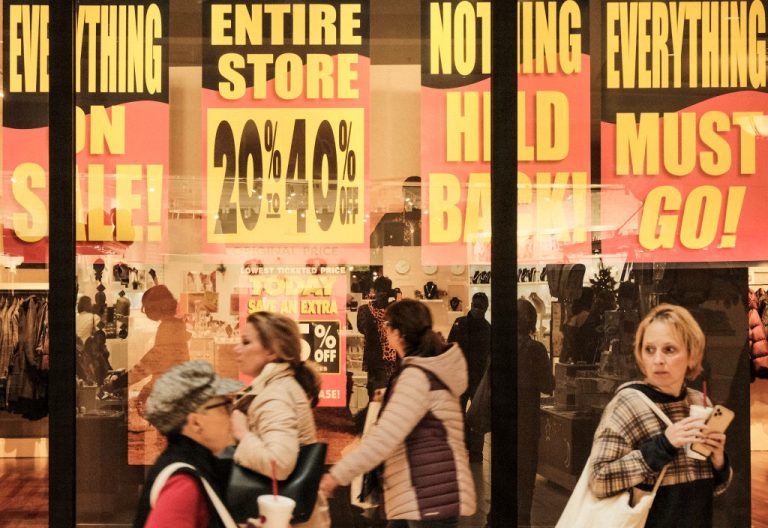Sales earnings were disappointing for this year’s Black Friday weekend due to COVID-19 fears, inflation, and supply chain constraints, foreshadowing even scantier earnings for the future.
Such are the findings of a Sensormatic Solutions report issued on Nov. 30 based on retail traffic data analytics within the company’s intelligent operating platform.
This year, retail sales on Black Friday plummeted by 28.3 percent compared to 2019, the last pre-pandemic year, the report said. At the same time, overall store traffic for the whole Black Friday weekend dipped by 21.7 percent.
By the same token, foot traffic at brick-and-mortar establishments on Saturday, Nov. 27, went down by 17.6 percent, while in-store sales on Sunday, Nov. 28, showed an 8.1 percent decline compared to 2019.
Black Friday Online
Not only did in-store shopping go down this year, but online sales on Black Friday also declined by 1.1 percent for the first time ever to $8.9 billion, according to a holiday shopping report by Adobe Analytics.
Success
You are now signed up for our newsletter
Success
Check your email to complete sign up
However, things might not be as bad as 2020, when many shoppers stayed home in fear of the pandemic. The amount of foot traffic on Black Friday at physical shops this year compared to the first pandemic year went up by 47.5 percent, while shopper traffic for the overall Black Friday weekend increased by 34.2 percent.
“Just as 2020 was a year like no other, 2021 also brings unique opportunities and challenges for retailers as we officially kick off the holiday season,” said Brian Field, senior director of global retail consulting at Sensormatic Solutions.
“Shoppers are returning to stores, but there are still lingering health and safety concerns making some cautious of traditionally crowded shopping days,” Field added.
READ MORE: American Shoppers Face an Expensive Black Friday
Traffic on Cyber Monday
This year was the first time a major shopping day like Cyber Monday showed a shrink in transaction levels compared to the previous years’ figures, the Adobe report pointed out. Internet transactions decreased by 1.4 percent over last year, totaling $10.7 billion in spending.
As for the brick-and-mortar retail traffic on Cyber Monday, foot sales decreased 9.9 percent compared to 2019, while in-store traffic for the week preceding Thanksgiving and Black Friday weekend was down 11.4 percent compared to 2019.

“With early deals in October, consumers were not waiting around for discounts on big shopping days like Cyber Monday and Black Friday,” Taylor Schreiner, director at Adobe Digital Insights, told The Epoch Times.
The report also analyzed store traffic on Thanksgiving Day and showed a decrease of a staggering 90.4 percent from 2019, purportedly due to numerous retailers closing their stores for the holiday.
However, not all analysts were alarmed by these dramatic figures, as some argued holiday shoppers tend to spread their purchases over the weeks leading up to Black Friday weekend.
“Over the past month, in-store traffic has progressively improved as consumers have started their holiday shopping early,” Field said. “Retailers are seeing positive change year over year, and the Black Friday weekend data shows an upward trajectory toward pre-pandemic levels.”
Prospects for the years to come
Other market analysts credited alarming inflation rates, scarcity, and fewer dramatic discounts as the main reasons for the disappointing sales numbers.
In addition, people are spending more than they earn. While personal income increased by 0.5 percent in October spending, rose by 1.3 percent.
At the same time, the U.S. household savings rate has been going down steadily while the total national debt grew by 6 percent, or $800 billion, from 2019.
Profusely spending may have some short-term beneficial effects for the retail sector, but since every budgetary deficit is propped up with even more borrowed money, the bubble is bound to burst.
















